Étiquette : Wilhelm Furtwängler
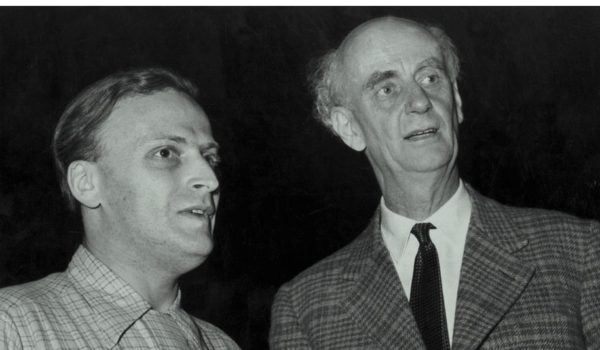
Yehudi Menuhin & Wilhelm Furtwängler
Mendelssohn: Concerto Op.64 Berliner Philharmoniker (BPO)
Berlin Jesus-Christus Kirche – 25 & 26 Mai 1952
Eng: Robert Beckett
______
Beethoven: Romances Op.40 & 50 Philharmonia Orchestra
London Kingsway Hall – 9 April 1953
Prod: Lawrence Collingwood & David Bicknell – Eng: Douglas Larter
Source: Bande/Tape 19 cm/s / 7.5 ips HTA 2
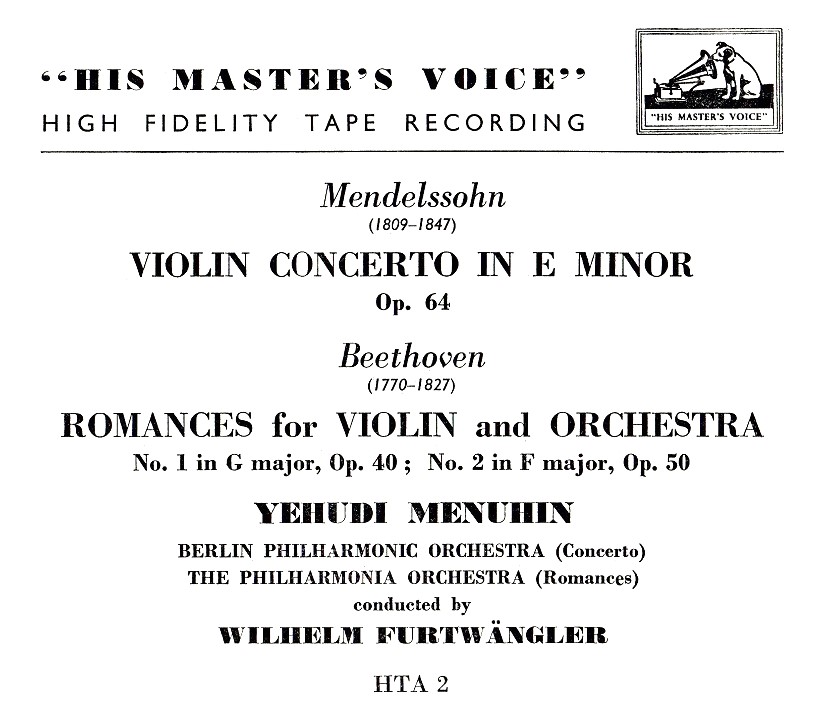
Menuhin et Furtwängler ont joué pour la première fois ensemble le Concerto Op.64 de Mendelssohn le 29 septembre 1949 au Royal Albert Hall de Londres avec les Wiener Philharmoniker.
Avec le Berliner Philharmoniker (Berliner Philharmonisches Orchester) de retour d’une tournée qui s’est déroulée entre le 24 avril et le 19 mai 1952, ils ont joué ce Concerto au Titania Palast de Berlin le 24 mai avant de l’enregistrer les 25 et 26 à la Jesus-Christus Kirche, salle utilisée habituellement par la Deutsche Grammophon et la RIAS.
C’était la première fois qu’après la guerre EMI enregistrait Furtwängler à Berlin. Il y eut ensuite un autre enregistrement berlinois, à savoir l’Ouverture de ‘Leonore II’ de Beethoven les 4 et 5 avril 1954 à la Musikhochschule, avec cette fois une équipe d’enregistrement allemande (Prod: Fritz Ganss: Eng: Horst Lindner), peut-être un test annonciateur d’un changement de politique discographique qui n’a malheureusement pas pu se concrétiser en raison du décès du chef d’orchestre. On peut penser en effet qu’EMI aurait souhaité enregistrer l’année suivante avec Furtwängler et le BPO les Kindertotenlieder de Mahler avec Fischer-Dieskau (l’œuvre a été jouée à Berlin en décembre 1953, et un enregistrement à Londres en mars 1954 avec le Philharmonia a été annulé) ainsi que le Deutsches Requiem de Brahms avec Grümmer et Fischer-Dieskau, deux projets qui ont été confiés in fine à la direction de Rudolf Kempe.
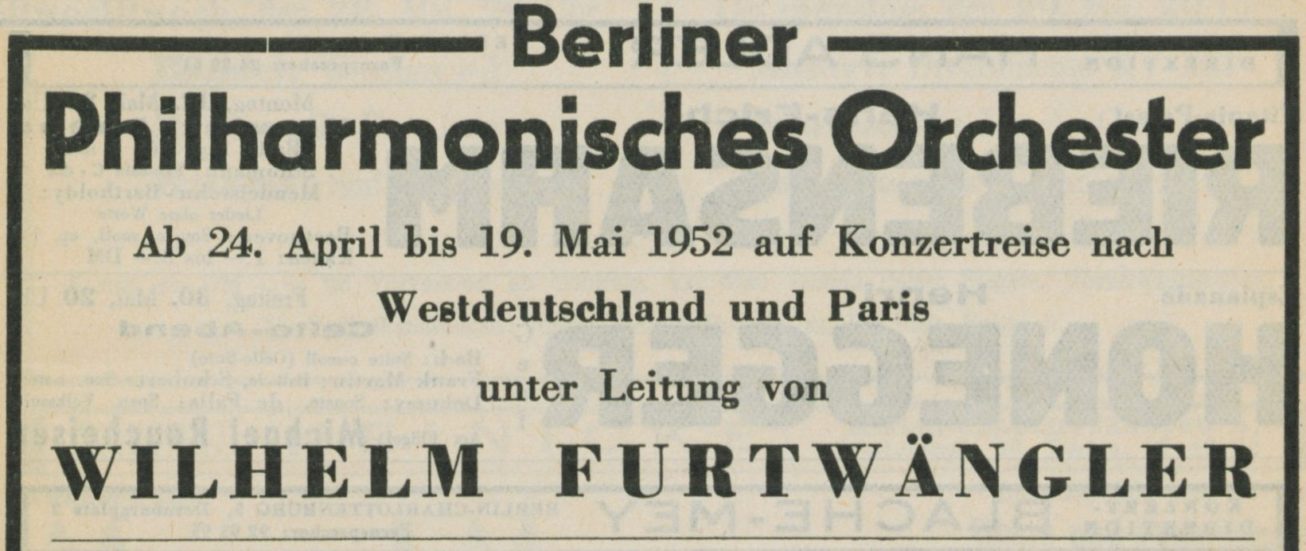
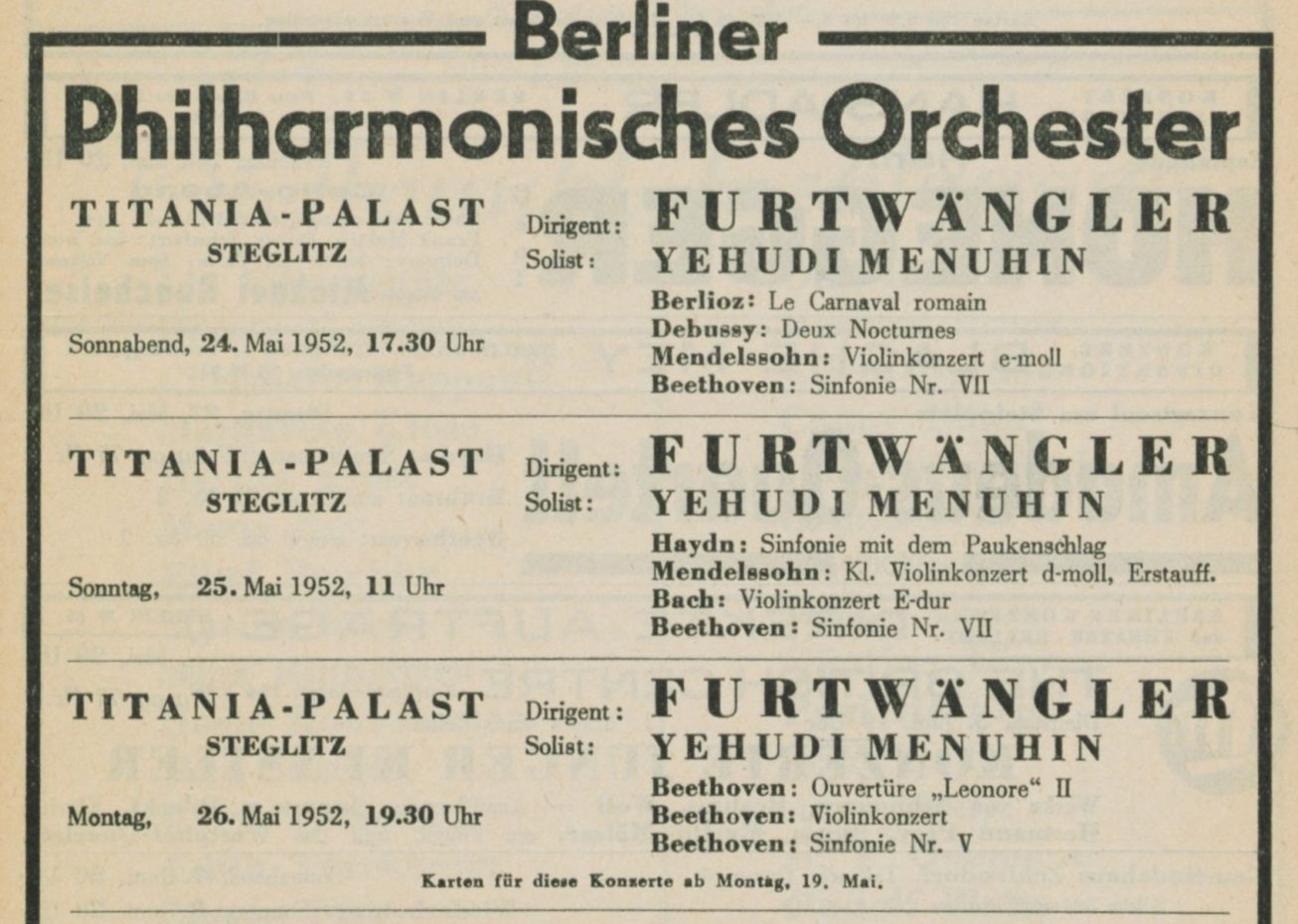
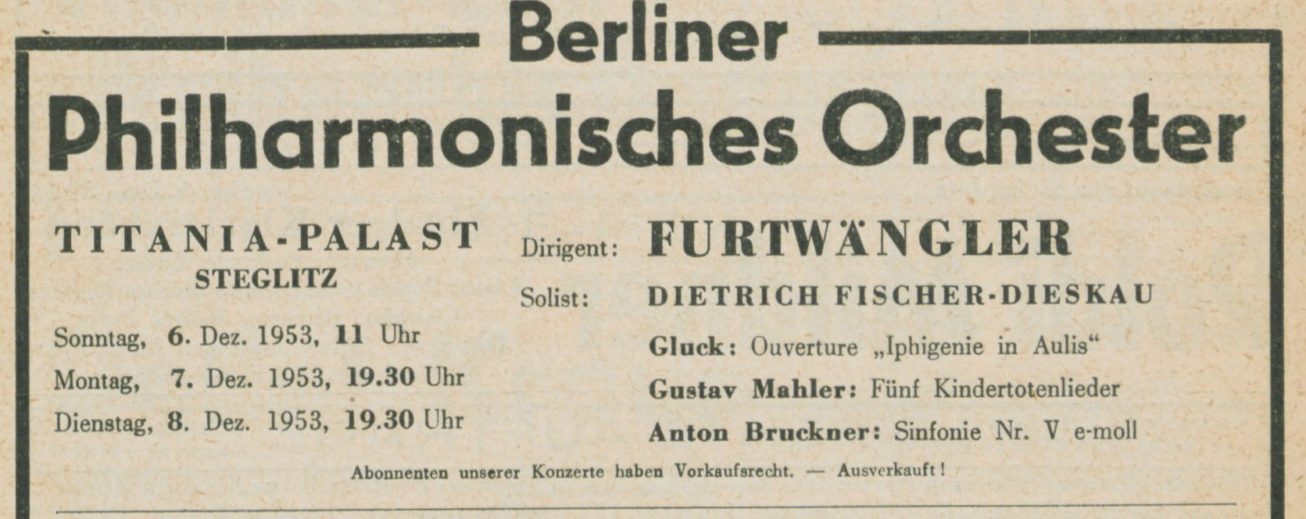

Menuhin and Furtwängler performed Mendelssohn’s Concerto Op.64 together for the first time on 29 September 1949 at London’s Royal Albert Hall with the Wiener Philharmoniker.
With the Berliner Philharmoniker (Berliner Philharmonisches Orchester) on their return from a tour that lasted from 24 April to 19 May 1952, they played this Concerto at the Titania Palast in Berlin on 24 May before recording it on 25 and 26 May at the Jesus-Christus Kirche, a venue known as being used by Deutsche Grammophon and RIAS.
It was the first time after the war that EMI recorded Furtwängler in Berlin. There was later another recording in Berlin, Beethoven’s Overture ‘Leonore II’ on April 4 and 5 1954 at the Musikhochschule, this time with a German recording team (Prod: Fritz Ganss: Eng: Horst Lindner), maybe a test which heralded a change in recording policy that unfortunately could not materialise due to the conductor’s death. Indeed, one might think that EMI would have liked to record the following year with Furtwängler and the BPO Mahler’s Kindertotenlieder with Fischer-Dieskau (the work was performed in Berlin in December 1953, and a recording in London in March 1954 with the Philharmonia had been cancelled) as well as Brahms’ Deutsches Requiem with Grümmer and Fischer-Dieskau, two projects that were ultimately entrusted to Rudolf Kempe.
Les liens de téléchargement sont dans le premier commentaire. The download links are in the first comment

Furtwängler – Franck Symphonie WPO
Wilhelm Furtwängler Wiener Philharmoniker (WPO)
Wien Musikvereinsaal – 14 & 15 Dezember 1953 Prod: Victor Olof – Eng: Cyril Windebank
Source: 33t/LP Decca Classiques 592107
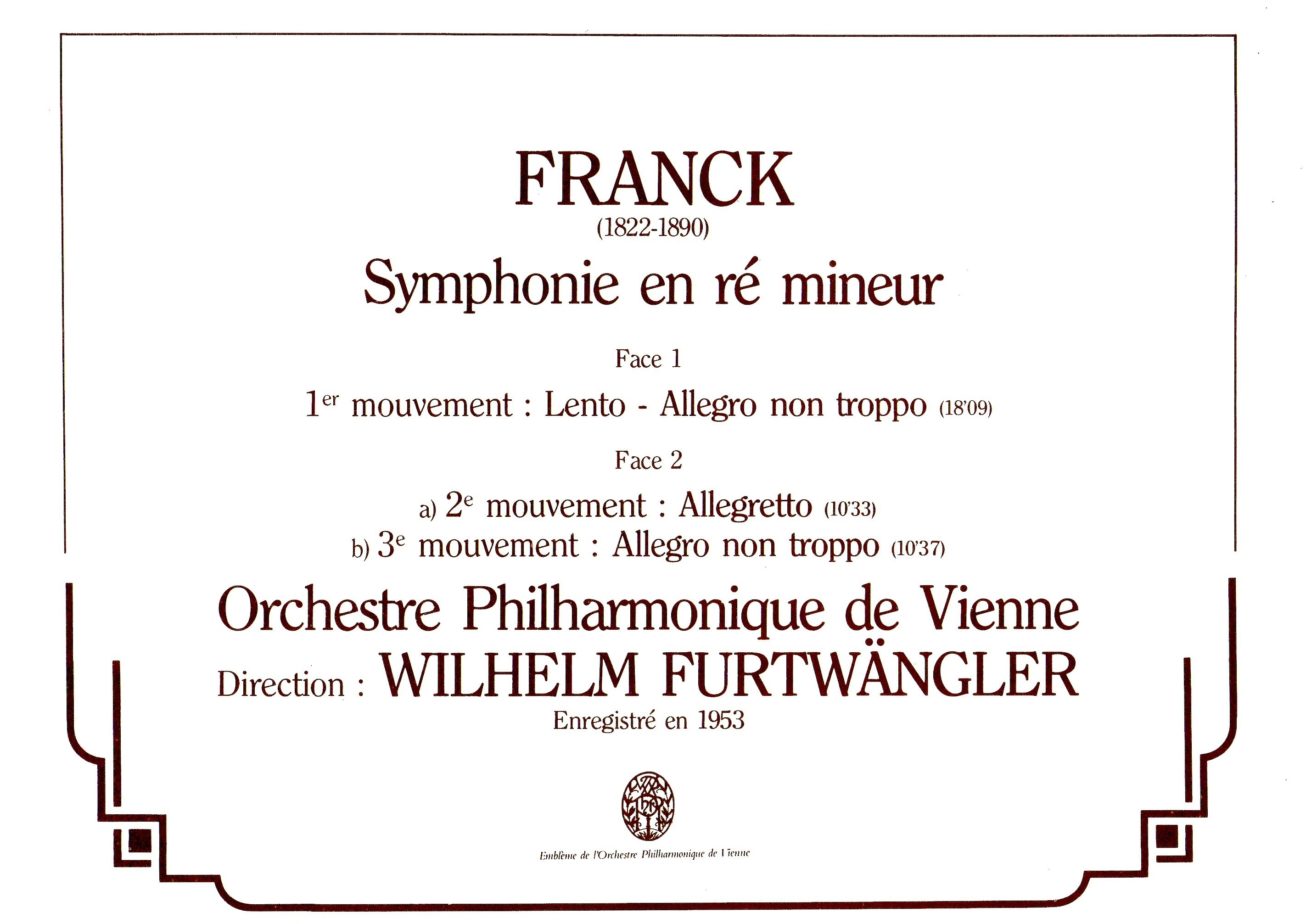
En décembre 1953, Furtwängler retrouve le producteur Victor Olof et la firme Decca pour enregistrer la Symphonie de Franck, avec un autre ingénieur du son, Cyril Windebank.
Du point de vue de la qualité sonore, c’est un des tous meilleurs de la discographie de Furtwängler.
Le microsillon Decca Classiques 592107, publié en France en 1982, est parfait, tant du point de vue de l’équilibre tonal et de la dynamique que de la qualité de la gravure. C’est donc ce que l’on appelle une ‘copie droite’ que nous pouvons vous proposer.
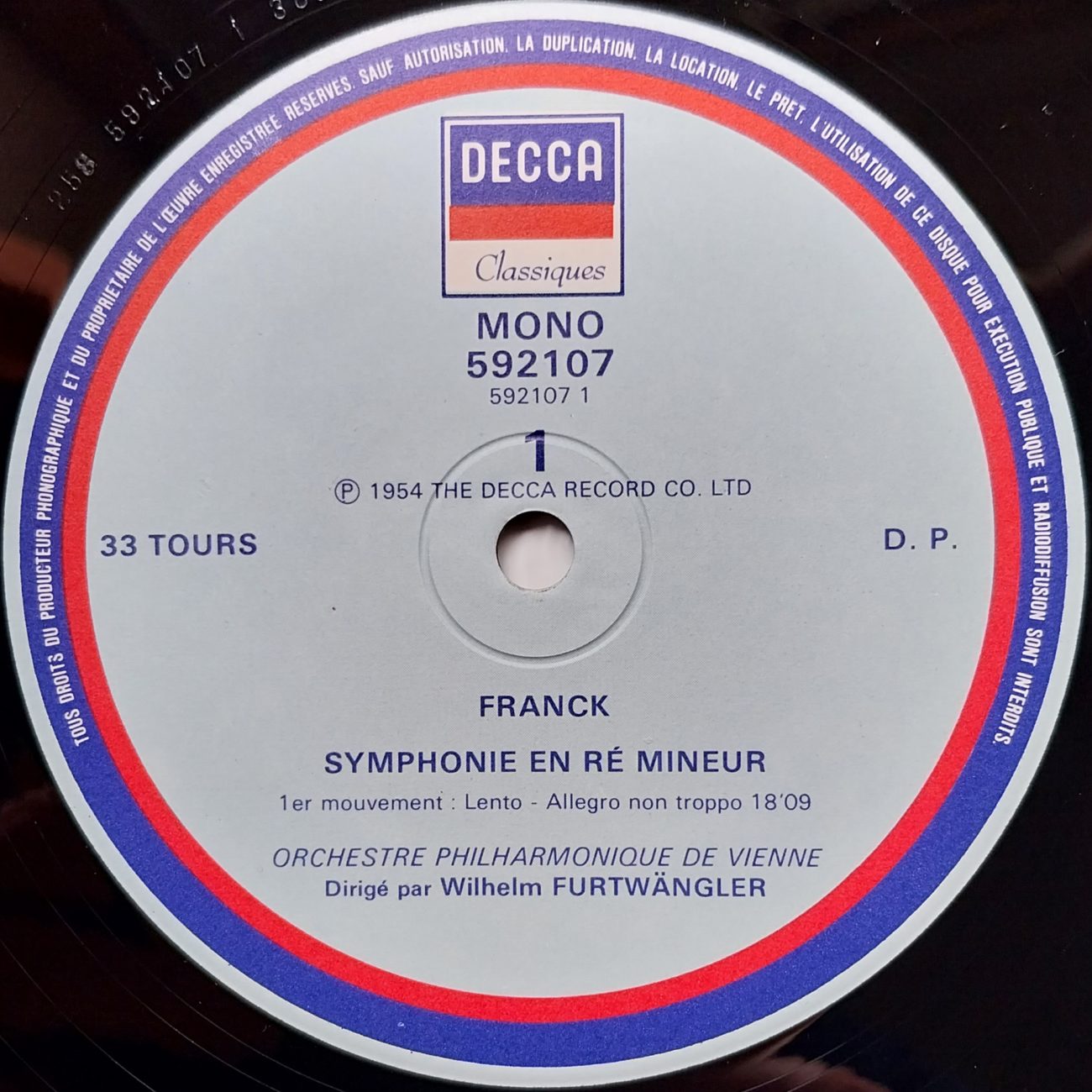
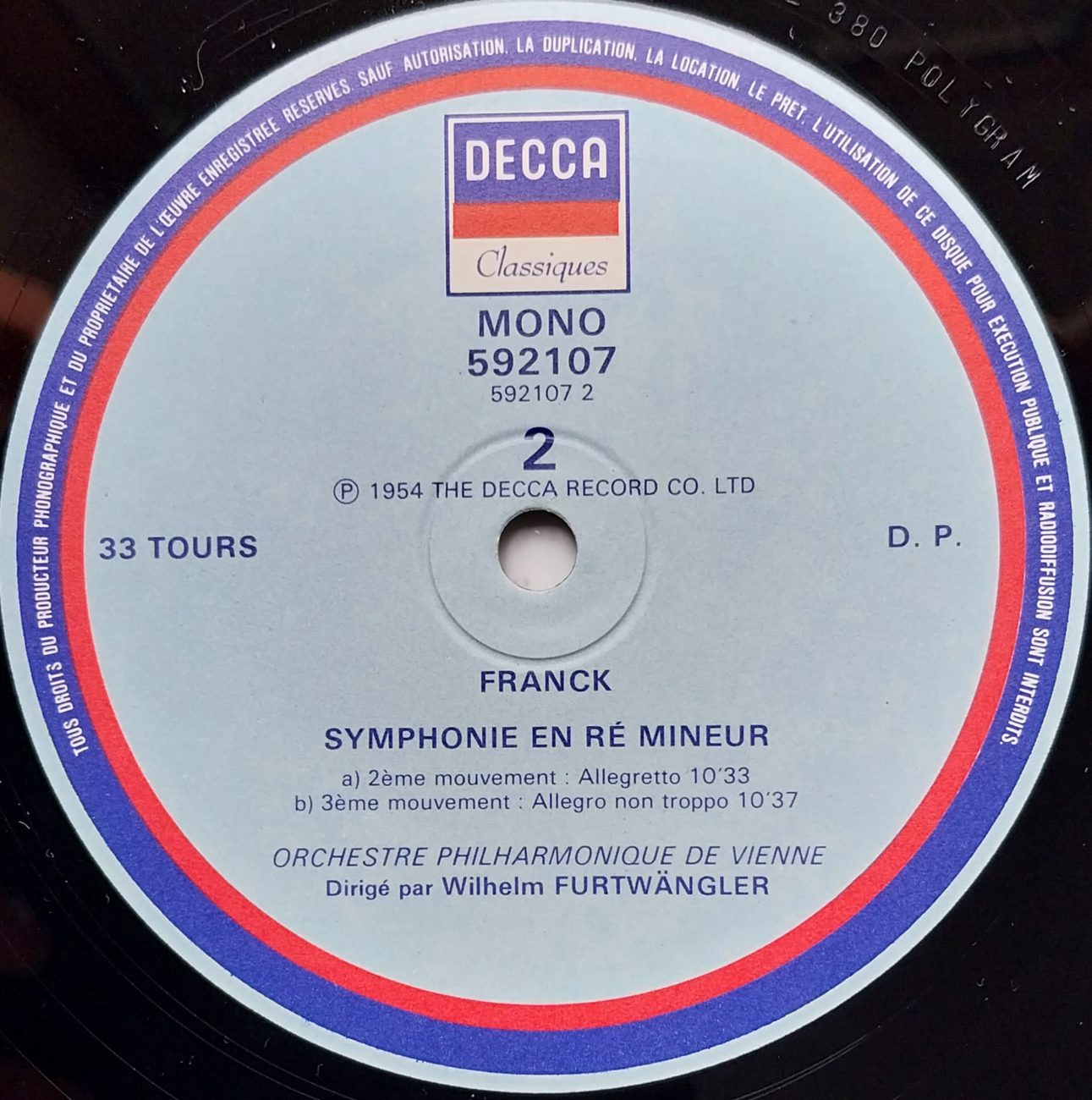
In December 1953, Furtwängler worked again with producer Victor Olof and Decca to record Franck’s Symphony, with another sound engineer, Cyril Windebank.
From the point of view of sound quality, it is one of the best in Furtwängler’s discography.
The Decca Classiques 592107 LP, released in France in 1982, is perfect, as much from the point of view of tonal balance and dynamics as from the quality of the disc itself. It is therefore a so-called ‘direct copy’ that we can offer you.
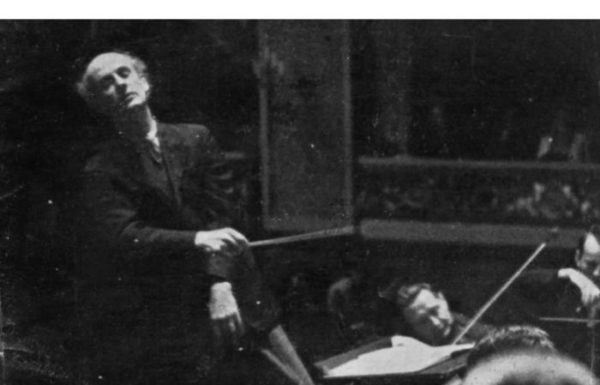

Kingsway Hall – 20,22,24 & 25 March 1948 Prod: Victor Olof – Eng: Kenneth Wilkinson
Source: 33t/LP Decca ACL 50 (1959)*
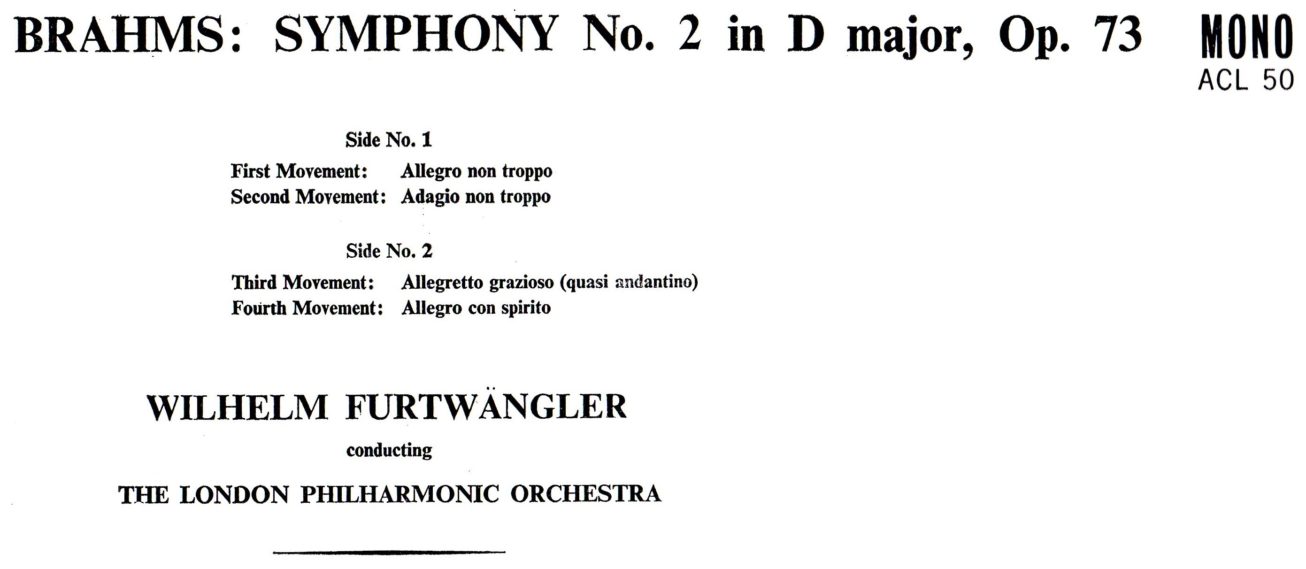
Entre le 29 février et le 25 mars 1948, Furtwängler a donné une série de dix concerts avec le LPO dont six à Londres et quatre en tournée, avec notamment au programme les quatre symphonies de Brahms (la Deuxième a été jouée à Londres le 11 mars), le dernier concert, le 25 mars,ayant été consacré à la Neuvième de Beethoven. Quatre jours d’enregistrement ont été consacrés à cette Deuxième (20,22,24 et 25 mars), et le 26 mars, Furtwängler a enregistré pour EMI l’Immolation de Brünnhilde avec Kirsten Flagstad et le Philharmonia, avant de partir pour une série de concerts à Buenos Aires.
La reproduction du son de cet enregistrement de la Deuxième de Brahms a toujours été problématique, et ce pour plusieurs raisons. John Culshaw raconte dans son livre ‘Putting the Record Straight’ que Furtwängler aurait refusé l’utilisation de plusieurs microphones, si bien que la captation a eu lieu avec un seul microphone, ce qui était cependant une pratique relativement courante à l’époque. Par exemple, DGG a enregistré de cette façon à la Jesus Christ Kirche de Berlin en 1953 la Symphonie n°4 de Schumann avec Furtwängler et le BPO. Toutefois Decca n’utilisait pas cette méthode et il se peut que cela ait créé des difficultés, car la prise de son par Decca de cette symphonie de Brahms manque peut-être un peu de présence, quoique, lors de la sortie des 78tours, EMG Letter a loué la chaleur du son dans l’excellente acoustique de Kingsway Hall. A ceci s’ajoute le problème lié à la définition de la courbe de gravure FFRR utilisée par Decca pour les microsillons (le disque LXT 2586 est paru en juin 1951), car l’éditeur en a utilisé plusieurs versions au début des années cinquante sans que les disques renseignent l’exacte version mise en œuvre.
La réédition de 1959 dans la collection ‘Ace of Clubs’ (ACL 50) permet de lire ce microsillon avec la bonne courbe FFRR, et de restituer la prise de son avec son équilibre tonal d’origine. On notera que lire ce disque avec la courbe RIAA qui est devenu un standard depuis les années 80, donne un son déséquilibré, et on perd beaucoup de l’interprétation, notamment avec un manque de graves qui affecte beaucoup la dynamique.
La prise de son est très musicale, et reproduit l’ambiance de salle du Kingsway Hall. On perçoit bien le son caractéristique de Furtwängler, ainsi que le fait que l’orchestre n’a pas la profondeur de son du BPO ou du WPO, ce qui n’est pas forcément un inconvénient pour cette œuvre.
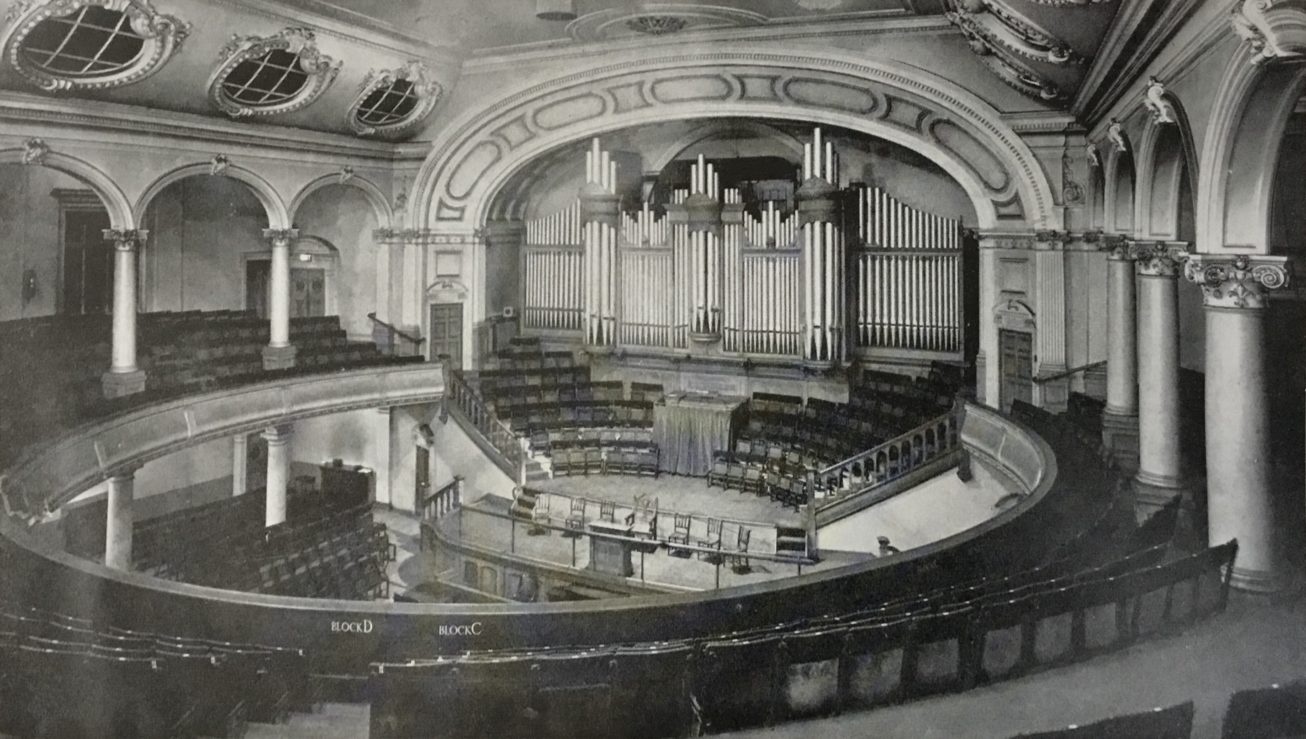
Kingsway Hall

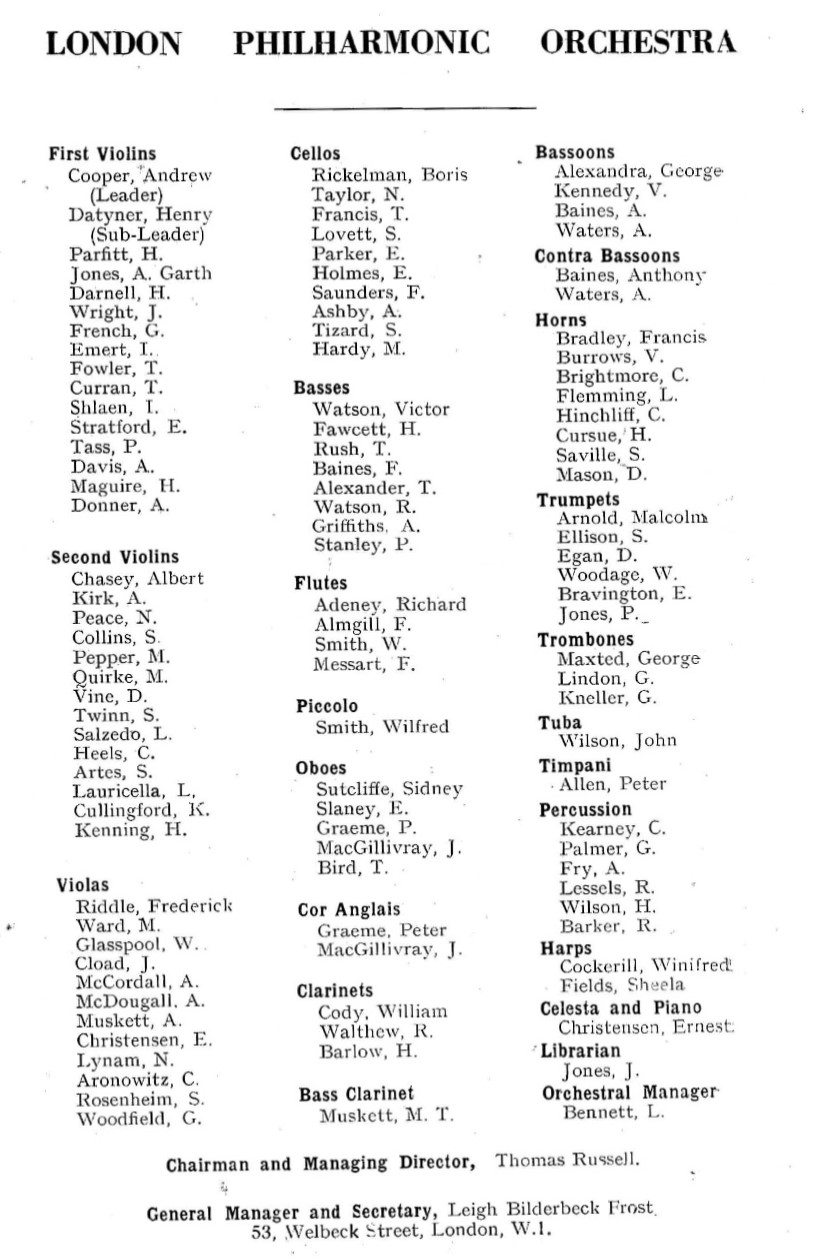
LPO Members – 1948
Between February 29 and March 25 1948, Furtwängler gave a series of ten concerts with the LPO, six in London and four on tour, with among others Brahms’ four symphonies on the program (the Second was played in London on March 11), and the last concert, on March 25, was devoted to Beethoven’s Ninth. Four days of recording were devoted to this Second symphony (March 20, 22, 24 and 25), and on March 26, Furtwängler recorded for EMI Brünnhilde’s Immolation with Kirsten Flagstad and the Philharmonia, before leaving for a series of concerts in Buenos Aires.
The reproduction of the sound of this recording of Brahms’ Second has always been problematic, for several reasons. John Culshaw tells us in his book ‘Putting the Record Straight’ that Furtwängler refused to use several microphones, so the recording was made with only one microphone, which was however a relatively common practice at the time. For example, DGG recorded Schumann’s Symphony no. 4 with Furtwängler and the BPO at the Jesus Christ Kirche in Berlin in 1953. However, Decca did not use this method and this may have created difficulties, as Decca’s recording of this Brahms symphony perhaps lacks a bit of presence, although when the 78s were released, EMG Letter praised the warmth of the sound in the excellent acoustic of Kingsway Hall. Added to this is the problem of the definition of the FFRR curve used by Decca for the LPs (LXT 2586 was released in June 1951), as the publisher used several versions of it in the early 1950s without the discs providing information on the exact version used.
The 1959 reissue in the ‘Ace of Clubs’ collection (ACL 50) allows to play this LP with the correct FFRR curve, to restore the recording with its original tonal balance. It should be noted that playing this record with the RIAA curve, which has become a standard since the 80’s, gives an unbalanced sound, and we lose a lot of the interpretation, especially with a lack of bass which severely affects the dynamics.
The sound recording is very musical, and reproduces the atmosphere of the Kingsway Hall. One can hear Furtwängler’s characteristic sound, as well as the fact that the orchestra does not have the depth of sound of the BPO or the WPO, which is not necessarily a drawback for this work.
Le label Maestro Editions de Richard Chlupaty (dont nous vous avons déjà présenté la publication du concert d’Edwin Fischer au Festival de Strasbourg 1953) propose une édition en CD (ME 008) des Concertos Brandebourgeois n°3 et 5 donnés au Festival de Salzburg 1950 à partir des meilleurs documents d’origine accessibles, et sans aucun traitement numérique. Par rapport aux éditions disponibles en CD, la plus-value musicale est importante.
Pour plus d’information, lire l’article en cliquant sur le lien:
furtwangler-bach-brandenburgische-konzerte-n-3-bwv-1048-5-bwv-1050-wpo/
Richard Chlupaty’s label Maestro Editions (from which we have already presented the issue of Edwin Fischer’s concert at the ‘Festival de Strasbourg 1953’) now offers a CD (ME 008) with Brandenburg Concertos n°3 and 5 given at the 1950 Salzburg Festival from the best available original documents, without any sonic processing. Musically, the improvement is important over the available CD issues.
To know more about this issue, please click on this link:
furtwangler-bach-brandenburgische-konzerte-n-3-bwv-1048-5-bwv-1050-wpo/

Wilhelm Furtwängler – Wiener Philharmoniker
Wien Musikvereinsaal – 25 & 30 Januar 1950
Prod: Walter Legge – Eng: Anthony Griffith
Source: EMI-Toshiba Angel WF-60005
Furtwängler a enregistré deux fois cette symphonie pour le disque, en 1950 et en 1952. On ne sait pas exactement pourquoi il a décidé de refaire cet enregistrement (1 et 2 décembre 1952). Toujours est-il que la nouvelle interprétation est nettement inférieure à la précédente, mais pour ses éditions internationales, c’est toujours l’enregistrement de 1952 qu’ EMI/HMV a utilisé, et il a fallu attendre le récent coffret Warner pour que la version de 1950 soit enfin de nouveau largement disponible, mais dans un son qui n’est guère satisfaisant en raison notamment d’une audible détérioration de la bande originale 76 cm/s.
La version de 1950 a tout d’abord été publiée sur 78 tours. En microsillon, il n’y a alors eu qu’une seule et unique édition, en France, sous la référence FALP 116 avec les numéros de matrice 2 XVH 13 et 14:
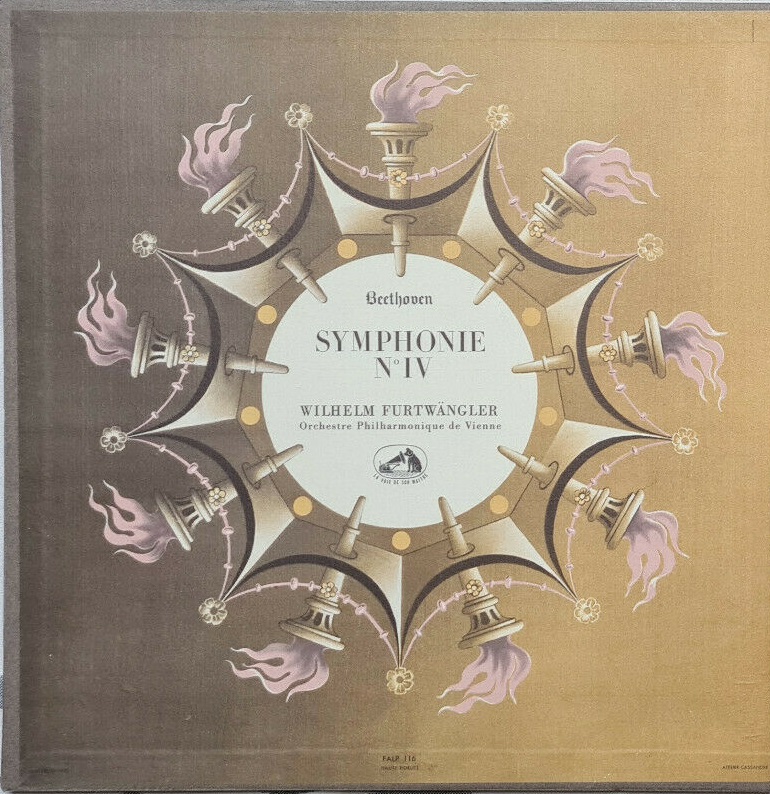
En juin 1953, la deuxième version a été publiée en microsillon sous la référence britannique ALP1059. En avril 1954, la référence FALP 116 a de manière surprenante été ré-utilisée pour la publication en France de la seconde version, avec cette fois les numéros de matrice 2 XVH 39 et 40:


C’est en 1980 au Japon (EMI-Toshiba WF-60005 sous le label Angel) et en Italie (EMI Italiana 3C 153 53800-5M), qu’ont été publiées les seules autres éditions officielles en microsillon de la version de 1950. Le disque japonais, dans un son superbe, constitue la meilleure source accessible à ce jour, car le microsillon italien est pratiquement introuvable et le CD TOCE-6180 publié ultérieurement par EMI au Japon n’atteint pas le même niveau de qualité.
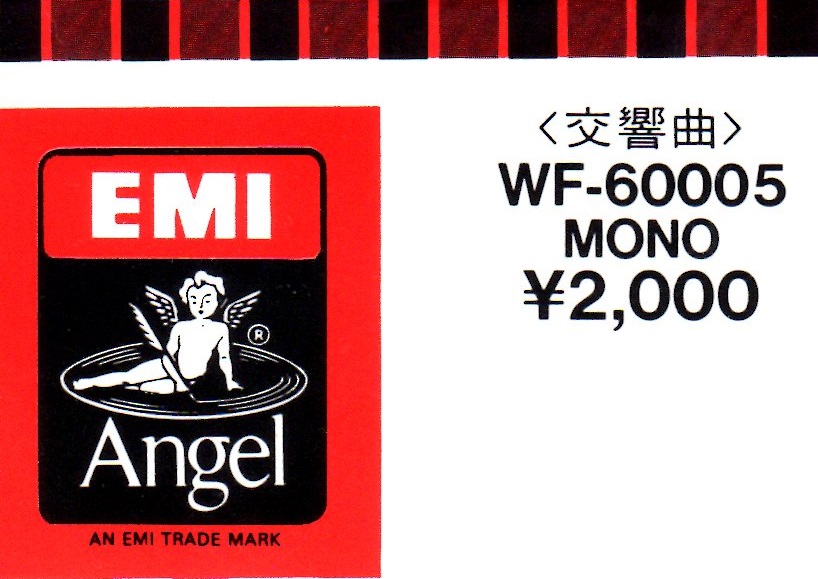

Sur les étiquettes, on remarque qu’ EMI/Toshiba reprend les numéros de matrice 2 XVH 13 et 14, mais il s’agit en fait d’une nouvelle gravure pour l’édition de 1980.
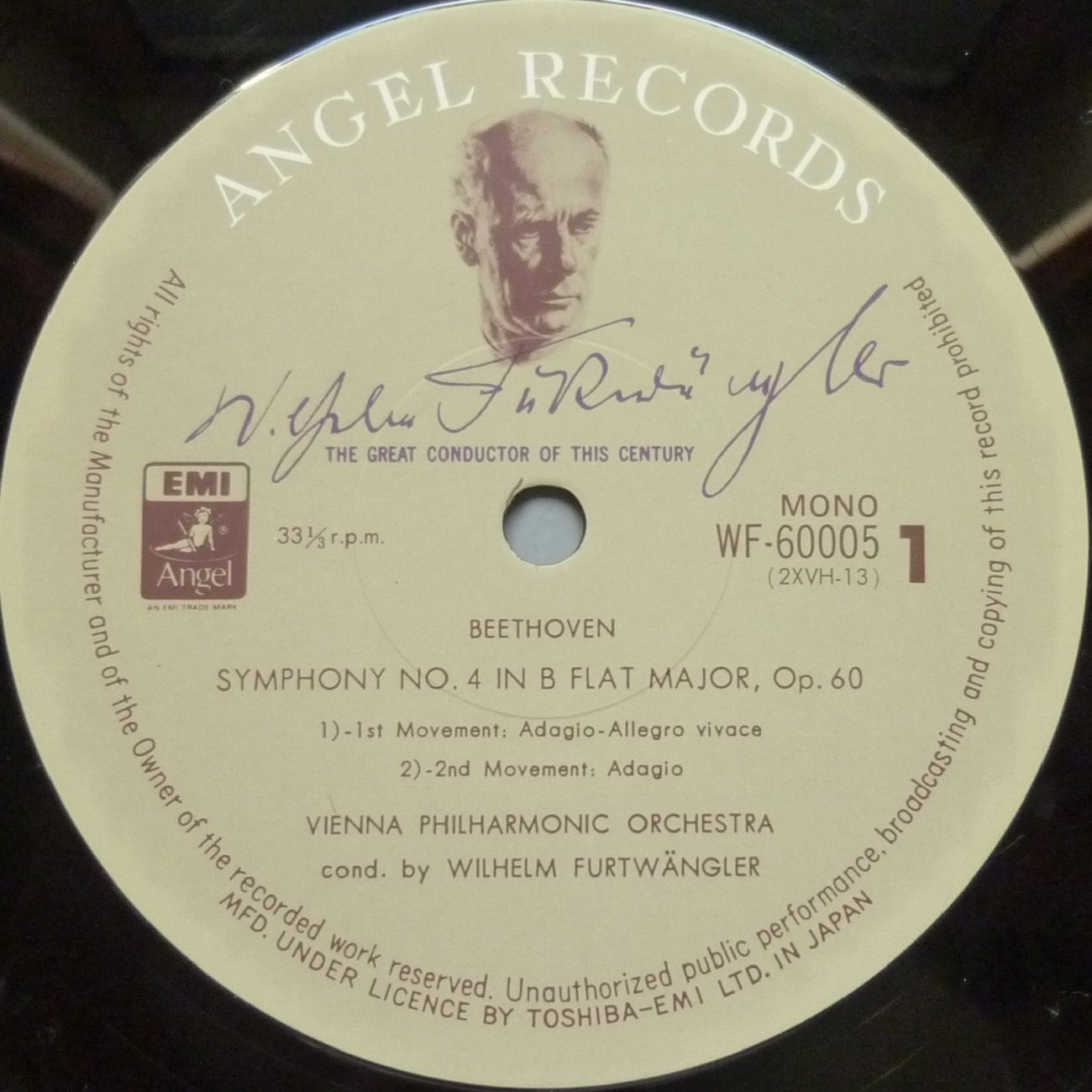

____________
Furtwängler has commercially recorded this symphony twice, in 1950 and in 1952. It is not quite clear why he decided to make another recording thereof (1 and 2 December 1952). Be it as it may, the second recording is clearly less succesful than the first one, but, for its international editions, it was always the 1952 version which EMI/HMV used, and it was not until the recent Warner boxset that the 1950 version has at last been made widely available, but with a sound that is less than optimal, partly due to a noticeable deterioration of the 30 ips master tape.
The 1950 version was firstly published on 78 rpm records. There was then only a single LP edition, namely for France, with reference number FALP 116 and matrix numbers 2 XVH 13 et 14.
In June 1953, the second version was published in England as a LP with reference number ALP1059. In April 1954, reference number FALP 116 was surprisingly enough used again for the publication in France of the second version, but this time with matrix numbers 2 XVH 39 et 40.
In 1980 in Japan (EMI-Toshiba WF-60005 under the label Angel) and in Italy (EMI Italiana 3C 153 53800-5M), were published the only other official LP editions of the 1950 version. The Japanese LP, in superior sound, is the best now available source, since the EMI-Italiana LP is almost impossible to find and since the CD TOCE-6180 later published by EMI in Japan does quite reach the same quality level.
On the LP labels, EMI/Toshiba uses matrix numbers 2 XVH 13 and 14, but of course the matrixes have been newly cut for the 1980 edition.



